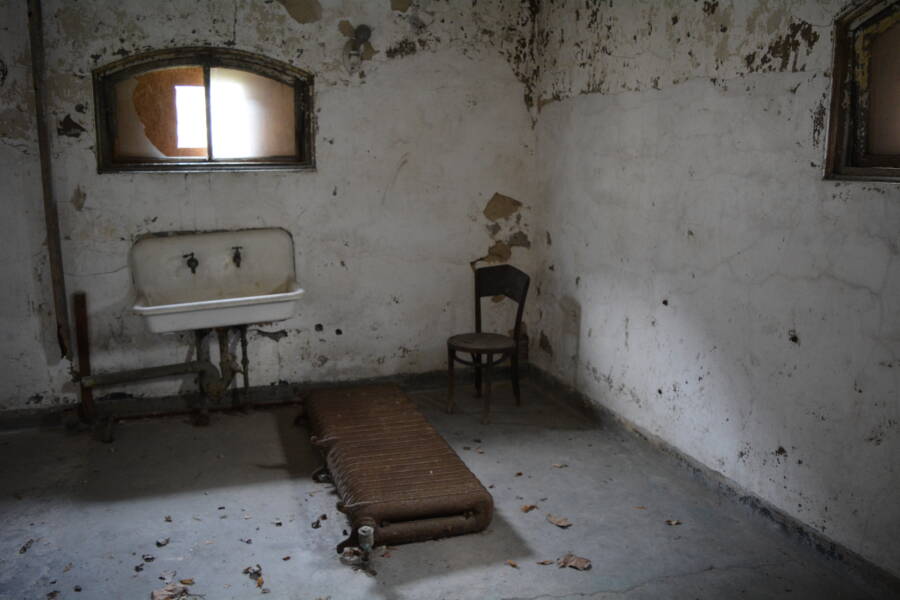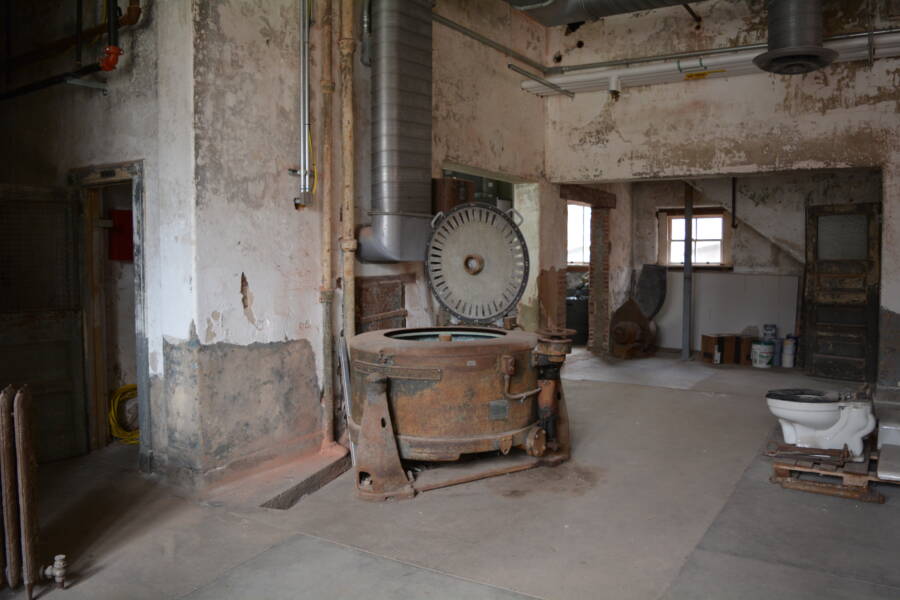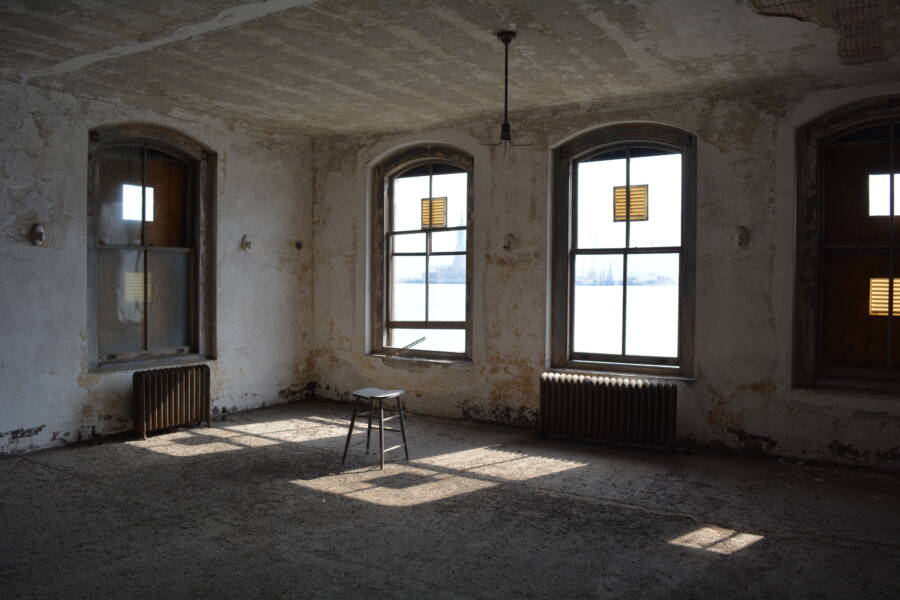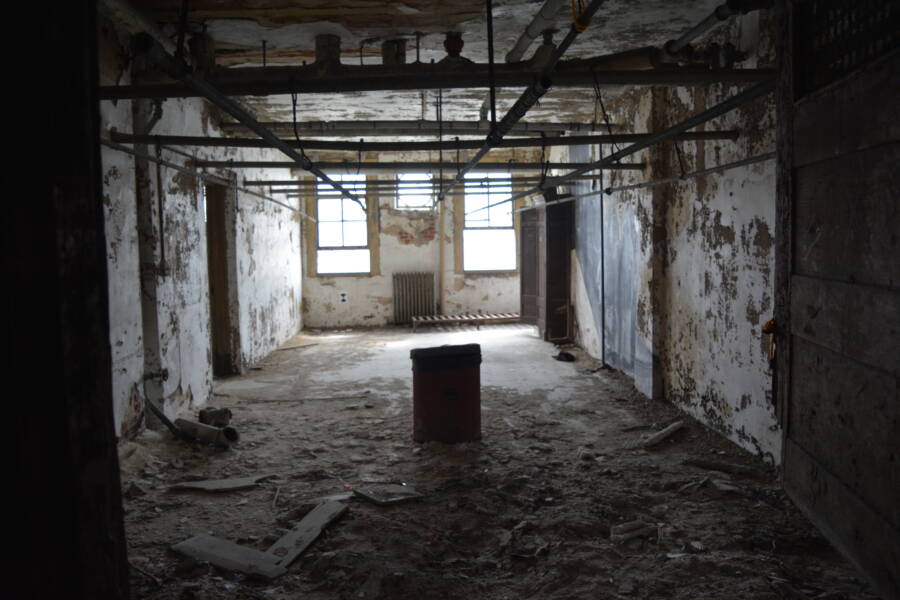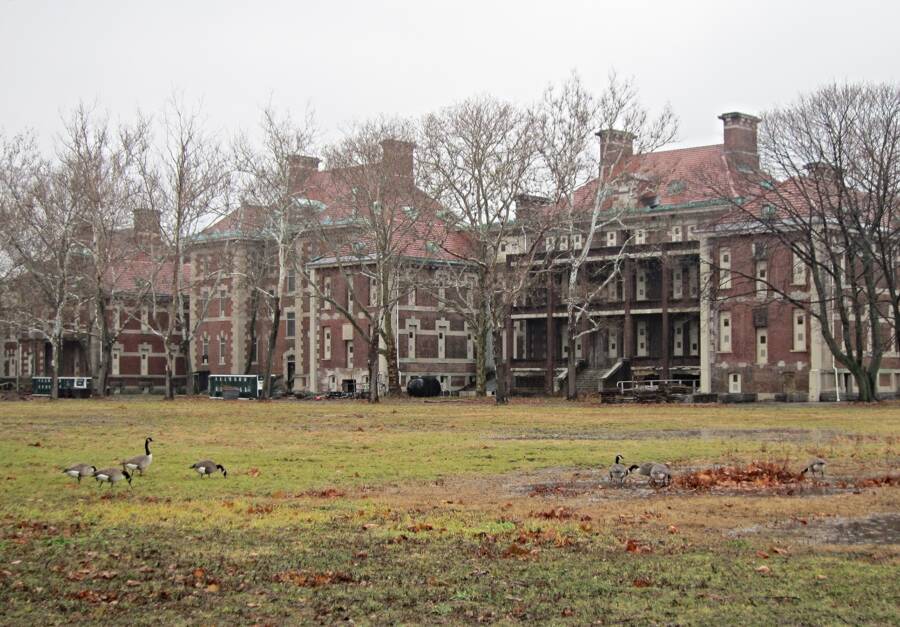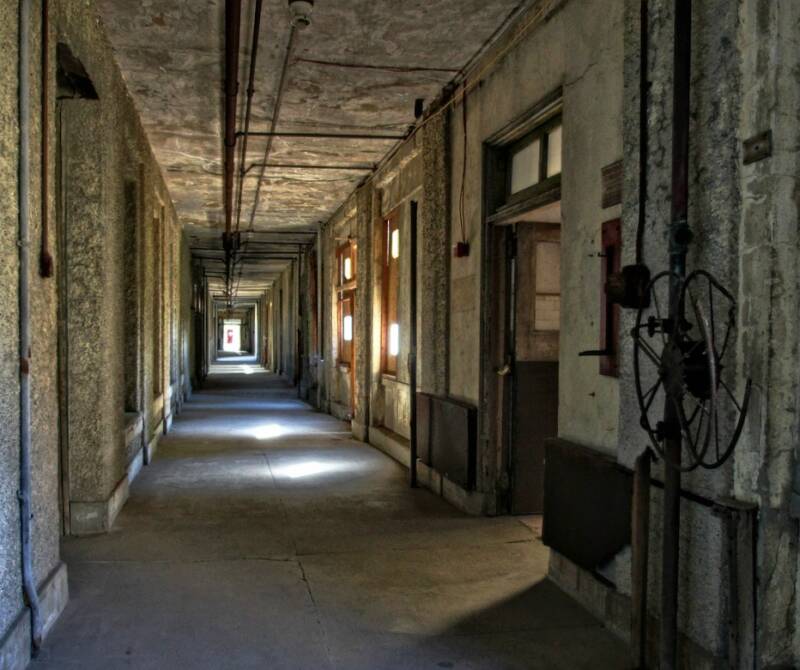The Abandoned Hospital On Ellis Island
The Ellis Island Immigrant Hospital was the very first public health hospital in the United States, opened in 1902. Now a spooky shadow of its former self, the abandoned hospital is still explorable through limited tours offered by Save Ellis Island, an official park partner of the National Park Service.
The hospital was built on two man-made islands constructed from land dug up to build the Lexington Avenue subway line in New York City. At the medical center’s peak, it treated more than 10,000 Ellis Island immigrants over the course of just a year. While the islands holding the hospital buildings are now connected, they were originally separated by a ferry basin because it was then believed that germs couldn’t travel across water.
One island held the general hospital, which had four operating rooms, one pediatric ward, one maternity ward, one psychiatric ward, and one women’s ward. This area also had a state-of-the-art laundry room for its time.
The other island had a hospital that focused on contagious diseases. The pavilion-style hospital design was suggested by famed nursing pioneer Florence Nightingale, and patients with different diseases inhabited separate wards to curb infection. Small standing rooms connected to quarantined wards allowed doctors to examine patients without even entering their rooms. But unfortunately, the hospital’s conditions still weren’t ideal.
Some patients were wrongly declared sick due to anti-immigrant fears, others who had treatable diseases were deported back to their home countries, and some families were even ripped apart amidst the chaos.
A fungal disease as treatable as favus, for instance, would result in deportation — unless the patient was forcibly hospitalized for an entire year. Most immigrant families were unable to afford the latter, and the former would require an entirely new attempt at entering the United States. If a child was stricken with this disease, families were often forced to choose between returning to their home country, splitting up so that one person could stay with the child, or abandoning the child entirely.
But the Ellis Island Immigrant Hospital also nursed countless people back to health and allowed them to prosper. Over a million patients passed through the doors, and many of the 350 children born there were named after the doctors and nurses who helped bring them into the world.
As immigration regulations tightened in the late 1920s, the hospital saw fewer patients before it shut down in the 1930s. In 1954, Ellis Island officially shut its doors as a place where immigrants were processed, leaving many of the buildings there abandoned for years, including the hospital.
